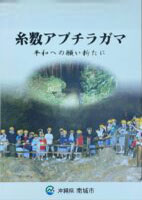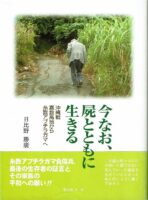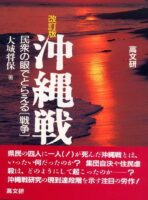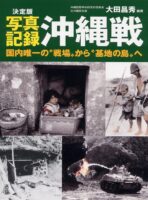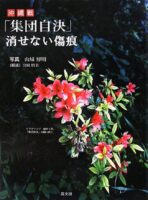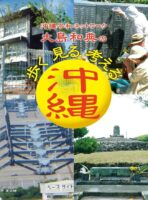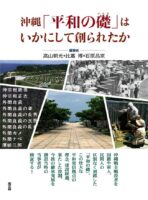Umi Chinen, Resident of Itokazu Area (35 Years Old Then)
Keeping out of the War

Fully Armed Soldiers in Itokazu Too
I remember that day, in July 1944. The Take Unit was stationed in Gusukuson (present Nanjo City Gusuku). I saw fully armed soldiers coming from Naha, walking in a long line in the midsummer heat and I felt pity for them. Soon after, soldiers came to the Itokazu Sugar Refinery. The village is located on high ground and surrounded by cliffs. The soldiers started digging their base pit in the hard bedrock. Food was scarce and they worked almost every morning at 10:00 and every afternoon at 3:00, the Itokazu villagers brought tea, brown sugar, and sweet potatoes to the encampments close to their homes and fields.
The Take Unit was an elite troop where discipline was extreme, and entering civilian houses was strictly prohibited. Therefore, their presence was welcomed by most villagers, and a kind of neighborly atmosphere developed near the encampments. Encampment constructions proceeded well and trenches for tanks were excavated, east of the Itokazu castle ruins. Besides, the Take Unit also conducted measurements of the Itokazu trench (Abuchira gama) and praised it as a magnificent natural encampment.
My Elder Son's School Evacuation and the October 10th Air-Raid
n August, my eldest son told me there would be a school evacuation. I got very worried because I'd heard about the shipwreck of the Taimamaru, the school evacuation ship, and I knew the trip to the mainland wasn't safe. But in September, the decision to evacuate was made. Watching my son moving toward the evacuation ship on a barge, I was bursting with sorrow, thinking it was our last goodbye.
October 10th 1944 was the day of the big air-raid over Naha. From the cliff of the Itokazu horse-riding grounds, we could see thick black clouds of smoke rising from the streets, and lots of planes flying in the sky. But later, a soldier who was on that day delivering a message in Naha, told me that bombs and napalm were dropped, and that the city had been turned into a sea of fire. Many civilians were burnt to death. Yet, this well-trained soldier quickly found shelter in an old graveyard where he led the people around them, saving lots of lives.
When he tried to get back to Itokazu, he had a hard time finding his way. He couldn't stop crying, walking along streets burnt to ashes, and he just kept going eastward, until he saw Itokazu from the top of a hill. I am still in contact with this soldier whose name is Masashi Uruga. He lives in good health at Matsumoto City.
Guns Firing from Ships in the Open Sea off Okutake
The Take Unit was transferred to Taiwan in December 1944. It was supposed to be a top military secret matter, but the villagers guessed, and said their farewells to the unit. The Tama 7073 Unit took over. It was a military engineer unit and they undertook the work. The villagers were paid to participate in the work. Half of the civilian houses were rented and used as barracks.
March 23rd (or 24th) 1945. It was equinoxial time and we had been busy preparing . The exploding shells rose up clouds of dust around Maekawa and Gushikami. The open sea was full of bombarding battleships. It was graduation day too, and we had almost forgotten the war, when we heard guns firing from ships off Okutake. We forgot about the feast and took refuge in the nearest trench.
Injured Soldiers and Civilian Refugees Too in the Itokazu Trench
The US army landed in the central area and while the Urasoe and Shuri battles were raging, many injured soldiers were carried every day to the Itokazu trench. But the trench wasn't large enough and there were also rows of numerous stretchers behind the trees, near the civilian houses.
The war dead were buried properly and grave markers erected in the fields nearby. However, as the front drew near Itokazu, the situation became dangerous. The war dead were wrapped in blankets and lain in deep cavities of the trench. In the early 1950s, Beside villagers, there were lots of refugees in Itokazu. In my home, the main house and the cattle shed sheltered dozens of people. Yet, when a shell ejected in the close neighborhood, striking a tall Chinese Banyan, and when another one fell unexploded 1m from it, the refugees ran away without a word.
I Witnessed the Horrible Tragedy of War
One day before dawn, I was going down to the river to do my laundry and I stepped on a slimy thing. I fumbled. It felt like a lump of meat. Thinking some dog had brought it there, I left it on a branch, planning to pick it up later on my way back. I came back at daybreak and got a terrible shock when I actually saw the lump of meat: it was the cheek flesh of a human head. The limbs and flesh of a few men were scattered everywhere around. Once again, I'd just witnessed the horrible tragedy of war.
The cave under the cliff on the south side of the Itokazu castle was an ammunition warehouse. In order to deliver ammunition from the cave to the outskirts ward residents, the defense corps, and the volunteer corps engaged in carrying ammunition to the Shuri and Urasoe fronts. Some of the women were comfort women from Korea, and they cried loudly. Senior soldiers Nagashima, Kato, and the defense team from the prefecture, who had used the nearby barracks, were seriously injured and then killed in action. As for me, I helped to treat the wounds. I also helped with funerals. The war dead were buried in a field south of the horse-riding grounds.
Under the Heavy Rain, an Injured Soldier Was Loosing His Bowels
On a heavily rainy day, an injured soldier who was loosing his bowels, managed to come near my house. I had heard that soldiers who could walk went south on May 25th, and that the severely injured ones who couldn't walk were given some potassium cyanide to use when the time would come.
Since he had struggled to come to me, I thought he'd rather die in a bright place than in a dark cave. There was a military kitchen nearby. I asked the people there to make some rice porridge, and I treated him for a while. When he told me he wanted to go south, I found a young villager who took him to Funakoshi. We said goodbye under the pouring rain and he warmly thanked me for having helped him. He was a native of Fukuoka prefecture, and a former postman. He didn't know whether his son, a preparatory soldier, was dead or alive. Unfortunately, I forgot his name.
Taking My Second Son to Find Shelter in Abuchiragama
Around June 1st, my second son and I left our small trench to go to Abuchiragama. There we joined a dozen severely injured soldiers and many civilian refugees. There was plenty of food inside the trench, but since we were given only one food ration it wasn't long until the enemy attacked Itokazu. They poured gasoline down the air hole of our Abuchiragama and set it on fire. But somehow, the fire went out. In the meanwhile, the old and infants had died. Quickly, we covered ourselves with blankets, and waited 3 days until all the gas was blown away.
Later, I was told that the US army first tried to attack the trench entrance with a small cannon. But it slipped and fell down. Next, they dug the ground with a machine to block the entrance with earth and bury us alive. But it didn't work. Finally they poured gasoline down the air hole and tried to light it on fire.
On August 23rd, we came out of the trench, believing that Japan won the war. We didn't know the Battle of Okinawa was over, and that Japan had lost the war.
The War Seems to Belong to a Very Distant Past
The postwar period was a hard time. Time passed. And, as we were finally pulling together our lives, members of the Take Unit suddenly turned up. Having heard their ship to Taiwan sank and the whole unit had perished, we couldn't believe they survived. Neither could they believe we survived too. Our links with the Take Unit are still very strong today.
Around 1986, a man called Nagashima, from Chiba prefecture, called the commerce and industry association of Tamagusukuson and asked: "I've heard my father died during the war near Tamagusuku. Could you please check?" So, I called Mr. Nagashima. I tell all the details of that time to any relative of the war dead who comes to Itokazu: how people died in the war, where they were buried, and that their remains are enshrined at the Soul Tower, in the south. I feel now that those tragic times belong to a very distant past. And I pray for peace to last eternally.





